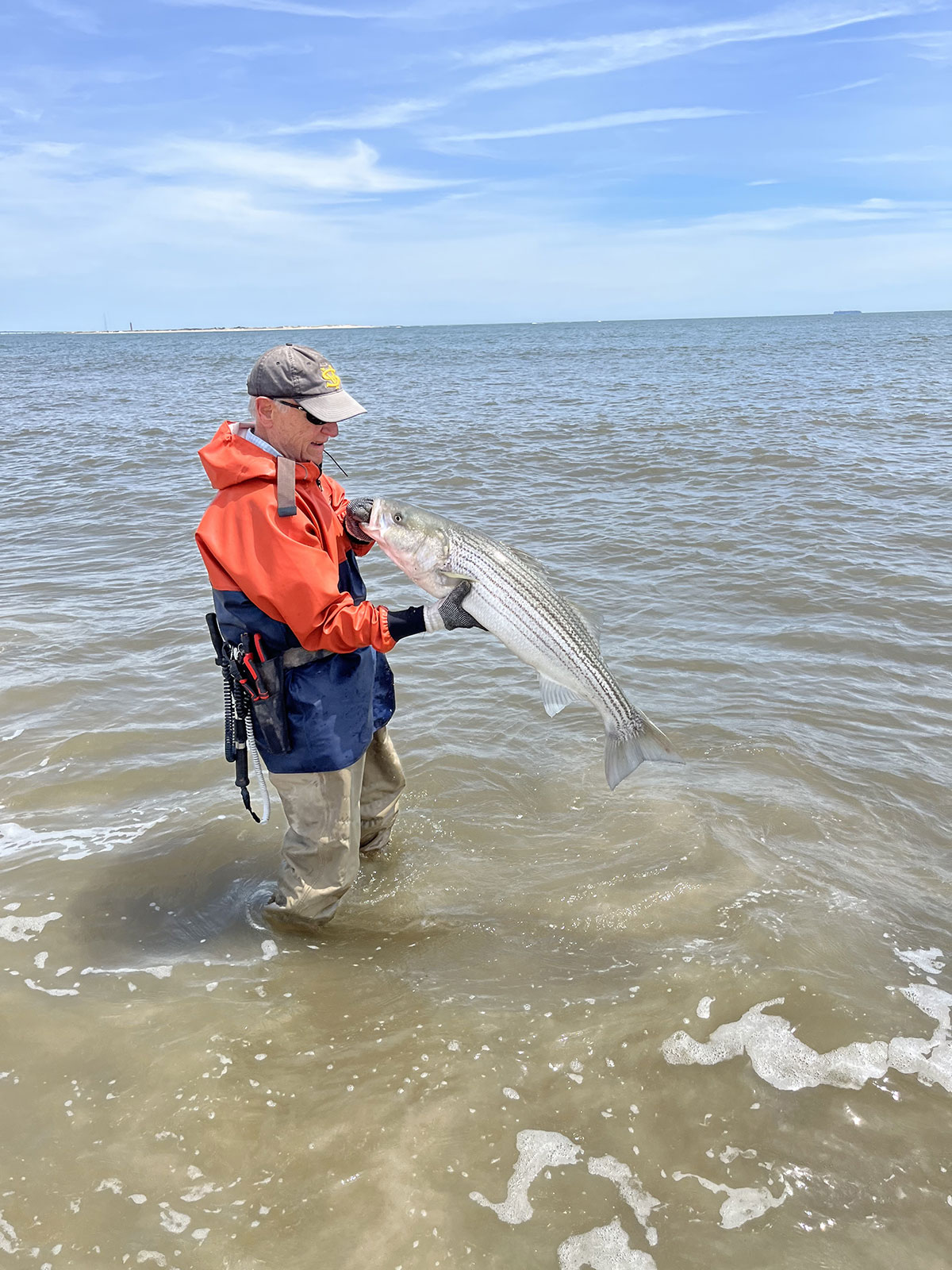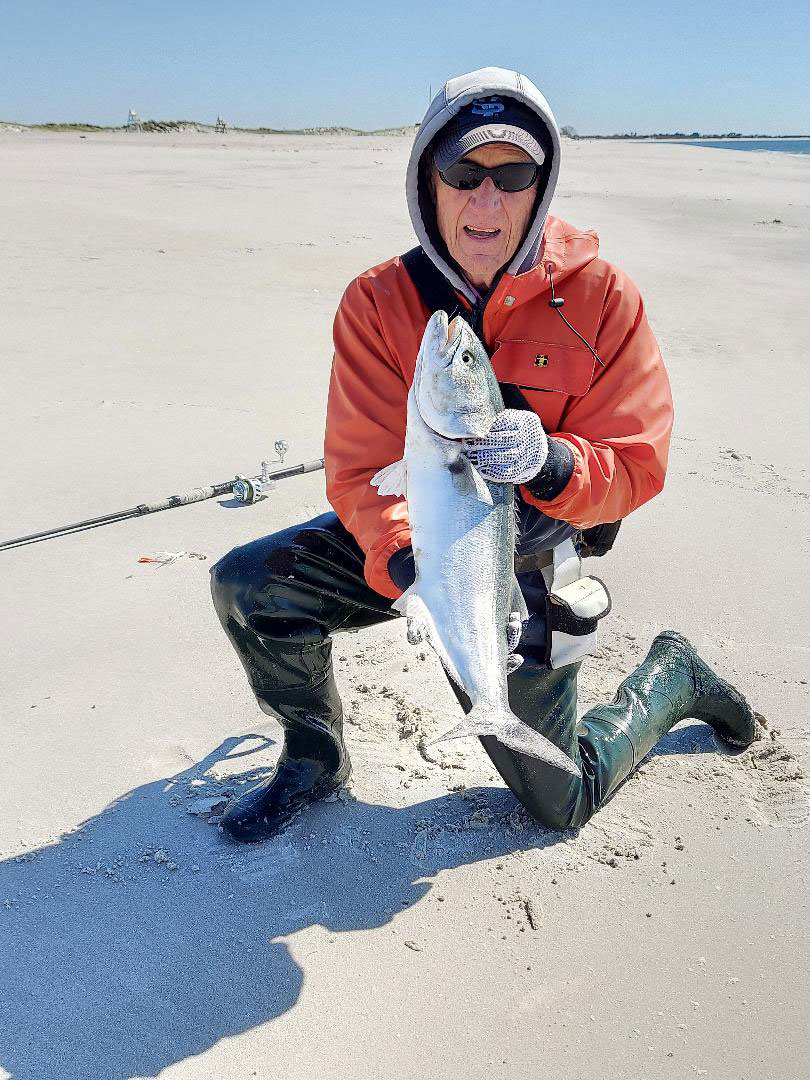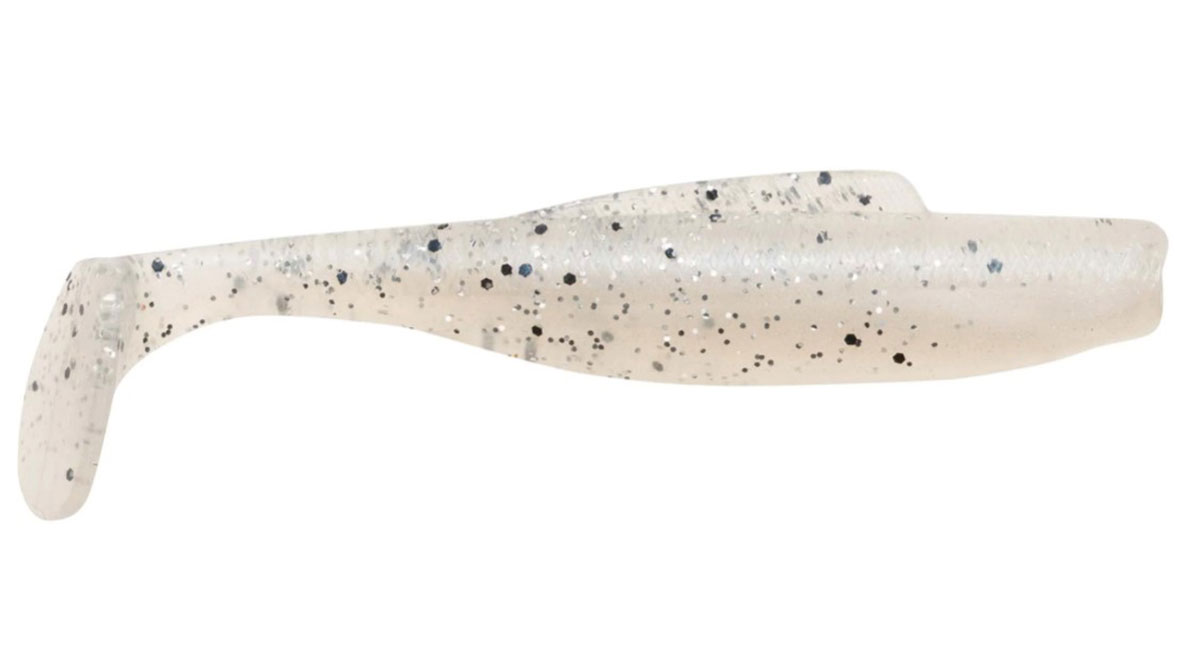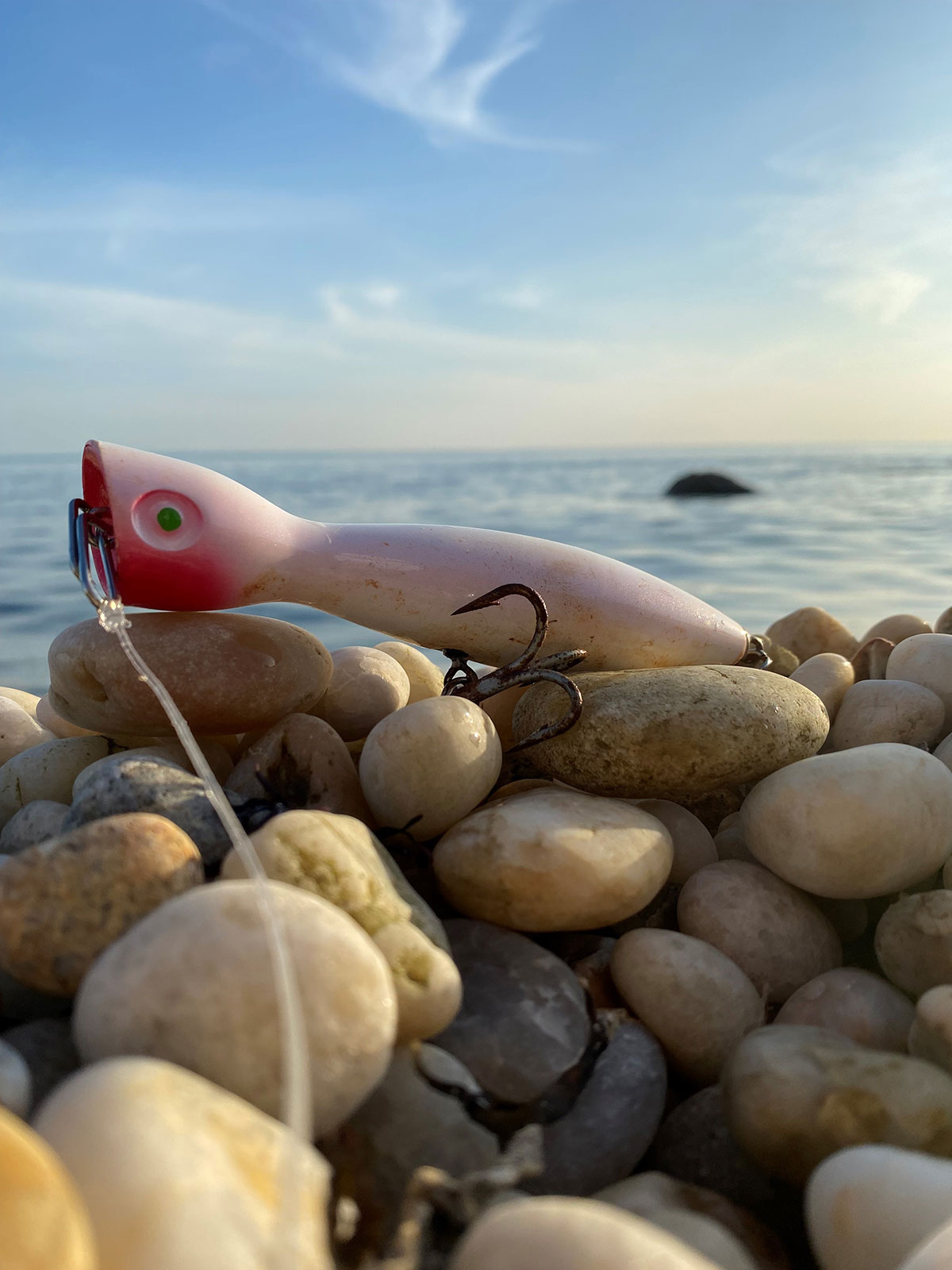
A seasoned surf fisherman shares his outlook the traditional surf patterns vs. todays.
When I returned to surf fishing after graduate school in the early 1970s, the surf season was much more ritualized from start to finish. That is, there were times in the season when most anglers fished in certain places using certain techniques. Spring was, for most anglers, a North Shore effort, summer was the dog days with much less fishing effort, and the fall was all about Montauk and the South Shore. Shifting bait and fish abundance, along with an expanding knowledge base and the rise of social media, has changed that.
Break With Tradition
In the late 1970s, I broke away from these traditions. It was early May, and I doubt I was the only one trying, but I don’t recall bumping into anyone. The only South Shore surf guys were a few dedicated wormers picking on school bass along the open beach. I remember thinking that although we didn’t traditionally fish the South Shore with lures in spring, something other than wormed school bass must be happening. After all, scientists had proven that bluefish spawn on the western edge of the Gulf Stream, including off New York Bight, before swarming shoreward looking for food. Baitfish are also moving – either northward on migration or inshore from the deep to spawn in the estuaries. It all made sense, but as far as I knew, few anglers worked lures in the South Shore surf in early spring.
In addition, scientists told us that many striped bass winter-over, not only Hudson fish in Long Island Sound, but also in South Shore bays and the shallow coastal ocean waters. We also once believed that adult bunker didn’t arrive here until the end of May, but evidence pointed to the contrary, including winter-over schools. So, I began developing a strategy to test my hypothesis. A formula of winter-over stripers, adult bunker, early-inshore bluefish, and migrating bait seemed to add up to opportunity with lures. Maybe it was time to try.
I lived on the South Shore in those days and among the many spots I frequented was Jones Beach Inlet and nearby beaches, so I started there. I didn’t pack my bag with a unique set of lures, rather carried the same array as in the fall: Super Strike Little Neck Poppers, pencil poppers, metal-lipped swimmers, tins, and an assortment of bucktails with a jar of pork rinds.

Gaining Confidence
I confess I was anxious on my first attempt. I paced back and forth on the beach, casting without a bump. Then I saw a sand point down the beach that ran out under the water into the trough. When I got there, I switched from a bucktail to a 2-3/8-ounce Super Strike Little Neck Popper, and after only a few pops, a 14-pound blue exploded on it. I finished the trip with a half-dozen monster blues, my experiment validated, and frankly, I was quite pleased with myself.
From that moment on, the South Shore inlets and their environs were among my favorite places to fish in May. I was a member of the High Hill Striper Club in those days and was excited to tell my friends in the club about my discovery. As stripers declined through the 1980s, and because the bluefish population was at a peak, the word spread, and more and more anglers joined the May run. However, as the 90s unfolded, there was a glitch in my enjoyment. It was no longer routine to have a day or two of great fishing unencumbered by crowds. Instead, anglers seemed to grow out of the sand within minutes of the onset of a blitz, thanks to the increased popularity of club telephone networks, car phones, and, eventually, cell phones. Just like stripers, I shy away from lots of commotion on the beach, so I began seeking other places to fish to avoid the frustration of tangles and choked hot spots.
Fishing Pressures
It was also clear by the late 1990s that the bluefish population had declined but remained large enough to support solid spring catches that have continued into the 21st Century. The size of the bluefish population didn’t fall off a cliff; rather, it was gradual. First, summer bluefishing declined on the North Shore, and then the fall South Shore run faltered, even though bluefish sporadically pleased on the North Fork and Montauk. In fact, I haven’t caught a South Shore blue in the fall since 2012, but thank goodness the striped bass population has been solid. The spring South Shore run was the last to reflect the decline.
Thankfully, stripers improved in the 90s, and perhaps the presence of winter-over stripers obscured the spring bluefish decline. Although not frequently caught mixed with spring blues in the 70s and 80s, they joined in more frequently in the 2000s.

The Decades of Cycles
As decades pass, fish and bait populations wax and wane. The 70s were all about weakfish, the 80s was the decade of big blues, and then the 90s witnessed the big-time return of stripers. Happily, the abundance of these species overlapped as one increased and the other decreased. So, as blues declined, winter-over stripers became more common.
Regardless of the changing abundance of blues and bass, my friends and I have been drawn to the inlets in May for decades. The South Shore spring fishing has eclipsed most of the traditional North Shore activity, although spring striper action continues in spots like Little Neck Bay. However, news of teen bluefish quickly turned many dedicated surf rats from north to south. The popularity of spring lure fishing for big blues and stripers in the new millennium has also displaced traditional worming for school stripers.
I confess that when stripers increased in the 1990s, I spent more time hunting them down on the North Shore, but as May began, those monster choppers beckoned me, too. Deciding when to go south is a bit tricky at times. Persistent weed in the South Shore surf will simplify my choice. North winds are good, as long as they aren’t too strong; south winds bring in the weed; moon tides help; a steady barometer isn’t a bad idea; and cloud cover is a big plus.
Adjust to the Change
Today, the South Shore inlets and adjoining beaches are crowded in May, and I’m adjusting to the crowds, as well as less bait and terrible weather. In addition, I’ve changed some of the lures in my bag since more stripers have mixed with the blues. I still tote bucktails in my bag, and poppers and pencil poppers remain mainstays, but several hard plastic lures (SP Minnows and Yo-Zuri Hydro Minnows) have been added. Also, lures, usually thought to be nighttime lures, have proven to be effective on day tides, too, including bottle plugs and darters. Some days, stripers dominate, and on others, it’s the bluefish; some days, there’s lots of bait, and others, not so much.
The decline of sand eels has meant that many small skinny lures, once so popular in spring, are no longer in my bag, nor are teasers. Likewise, a variety of small soft plastics on leadheads once dominated the surf bag; both day and night. However, those soft plastics are not very tough against bluefish teeth, so I’ve left them at home. Then came Z-Man soft plastics with elastin. The Z-man plastics stand up well to bluefish teeth, and the blues love them. I’ve caught as many as six to eight big blues before I needed to replace the plastic. The Z-Man DieZel MinnowZ (4 and 5 inches) has become my go-to soft plastic when conditions allow, and the fish want them. I use the 4-inch size on a 3/4-ounce head and the 5-inch on a 1-ounce head. Among my favorite lead head designs for this purpose are the VMC Flat Shad and Boxer styles in 3/4 to 1-ounce weights.
In addition, when stripers dominate, other soft plastics have proven to be good fish catchers, including Tsunami Holographic Swim Baits, Storm Wild Eye Swim Baits, and Berkley models. I tested a new product this fall, the 5-inch Berkley Powerbait Cull Shad last fall with success, and I bet they’ll work just as well in the spring. The Tsunami and Storm lures are pre-weighted, and that makes them more convenient to use, but once torn, they are out of the game.

This Year’s Weapons
Each decade has featured a different dominant gamefish, type of bait, and weather pattern, as you can note from the above discussion, so our bags have gradually changed, too. However, those decades are history, so let me summarize what’s in my bag now. A good night bag should have bucktails, soft plastics, hard plastics like Bombers, S. P. Minnow, Yo-Zuri Hydro-Minnows, darters, and bottle plugs.
The daytime bag features bucktails, soft plastics, pencil poppers, poppers, SP and Yo-Zuri Hydro-Minnows, a few “tins” including a diamond jig and tube, and one or two big swimmers just in case the adult bunker hit the beach.
Adjust & Adapt
I can hope all I want to, but the reality is that fish and bait abundance are not under my control or yours, either. However, I can extrapolate what the May run might be like with reasonable accuracy, given recent past experiences. I continue to believe that the spring run will be productive if we can finally get some normal spring weather instead of late winter weather. “One never knows, do one.” This old vaudeville gag also applies to fishing, especially surf fishing, since the sport is so unpredictable. It may be a bit disconcerting to realize how weather and the type and abundance of bait profoundly controls the quality of our fishing, but that’s the reality. The ocean can be filled with fish, but if there isn’t any bait where you are standing, it’s very likely you’ll be “skunked.”
| BAIT CYCLES |
| The consistency of catches and the abundance of fish in any spot or area is not only dependent on the abundance of predators, but also on the type and abundance of bait. The last eight to 10 springs has featured cold, windy, and rainy weather. These conditions either prevent or limit the spawning success of bait by diluting salinity, spreading the eggs apart, dispersing plankton blooms, or changing the type of plankton from those the fry need to types they can’t use. The bottom line is, bait spawns have not been generally as good as in previous decades: sand eels especially have taken a huge hit in most places. |
I constantly remind myself to be very observant and try to make sense out of what’s happening around me. By doing so I often pick up clues about bait and gamefish abundance and behavior that, in turn, allows me to make adjustments in order to be as successful as possible. I strongly believe that an angler’s ability to adjust is a huge factor for consistent success in the new Century.
The spring inlet run remains one of the year’s most reliable runs of fish, and with a little help from Mother Nature, 2024 just might be one of the best springs in a long time.



